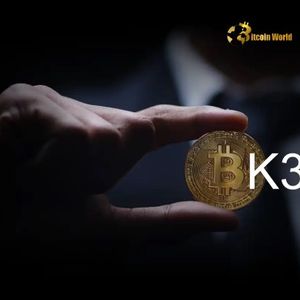BitcoinWorld XChat Security Fortress: Elon Musk Unveils End-to-End Encryption and Bitcoin-Style Features on X In a significant move for the social media landscape, Elon Musk X has announced the rollout of X’s new messaging feature, dubbed XChat. This isn’t just another chat function; according to Musk, it’s launching with robust security measures designed to protect user conversations, including end-to-end security and what he described as “Bitcoin-style encryption.” For anyone concerned about Messaging App Privacy in the digital age, this announcement from the X platform leadership is certainly attention-grabbing. What is XChat and Why is End-to-End Encryption Crucial? XChat represents X’s effort to build a comprehensive messaging system directly into the social media platform. While X (formerly Twitter) has had direct messages (DMs) for years, this new feature appears to be a significant upgrade, aiming to compete with dedicated messaging apps. At the heart of modern secure messaging is End-to-End Encryption (E2EE). This is a method of secure communication that prevents third parties from reading data while it’s being transferred from one point to another. In essence, only the sender and the intended recipient can read the message. Even the service provider facilitating the communication cannot access the content. Think of it like sending a message in a locked box that only you and your friend have the key to. The postal service (the messaging platform) can carry the box, but they can’t open it to read the message inside. This is fundamentally different from traditional communication methods where the service provider (like an email provider) often has access to the content. Why is E2EE crucial for Messaging App Privacy ? Protects Against Snooping: It makes it incredibly difficult for hackers, governments, or even the platform itself to intercept and read private conversations. Enhances Trust: Users can communicate sensitive information with greater confidence, knowing their messages are for their eyes only. Prevents Data Breaches: If the platform’s servers are compromised, the encrypted message content remains unreadable to the attackers. The inclusion of E2EE in XChat is a fundamental step towards positioning it as a secure communication tool, addressing a critical user need in today’s digital environment. Decoding the “ Bitcoin-Style Encryption ” Claim Perhaps the most intriguing part of Musk’s announcement was the mention of “ Bitcoin-Style Encryption .” It’s important to clarify what this likely means in the context of a messaging app, as it doesn’t imply XChat messages are being stored on the Bitcoin blockchain. Bitcoin uses several cryptographic principles, primarily public-key cryptography (also known as asymmetric encryption) for securing transactions and verifying ownership. It also relies on cryptographic hashing and digital signatures. When Musk refers to “Bitcoin-style encryption” for XChat Security , he is likely referencing the application of similar robust cryptographic principles, specifically public-key cryptography, within the messaging protocol. Here’s how this might manifest: Public-Key Cryptography: Like Bitcoin uses public and private keys for sending/receiving funds securely, XChat likely uses key pairs for users. Your public key can be shared with others so they can encrypt messages only you (with your private key) can decrypt. This is standard for E2EE protocols (like Signal’s protocol, which WhatsApp and others use). Identity Verification: Similar to how Bitcoin transactions are cryptographically signed to prove they come from the owner of the private key, XChat might use digital signatures to verify the authenticity of messages and the identities of participants in a conversation. Secure Key Exchange: A critical part of E2EE is securely exchanging the keys used to encrypt and decrypt messages. Protocols often use methods inspired by cryptographic principles to ensure this exchange is secure and not vulnerable to interception. It’s less likely to mean features directly tied to the blockchain’s immutability or distributed ledger aspects, as XChat is a centralized service run by X. The term is more likely intended to evoke a sense of robust, cryptographically sound security akin to the foundational principles that make Bitcoin transactions secure, rather than integrating with the Bitcoin network itself. Beyond Encryption: Features Enhancing XChat Security and Usability Beyond the core E2EE and “Bitcoin-style” claims, Elon Musk X highlighted several other features rolling out with XChat that contribute to its functionality and potential Messaging App Privacy : End-to-End Security: While often used interchangeably with E2EE, this might imply a broader security posture encompassing not just message content but also protection against metadata leaks or other vulnerabilities within the app itself. Vanishing Messages: This popular feature allows users to set messages to automatically delete after a specified time period. This adds an extra layer of privacy, ensuring sensitive information doesn’t persist indefinitely in chat logs. It’s a common feature in secure messaging apps and enhances user control over their digital footprint. Audio and Video Calling: Integrating secure voice and video communication within the encrypted framework is crucial for a modern messaging app. Ensuring these calls are also end-to-end encrypted provides a private channel for real-time conversations. Support for All File Types: Allowing users to share any type of file (documents, photos, videos, etc.) securely within the encrypted chat environment adds significant utility. This means sensitive documents can potentially be shared without leaving the secure, encrypted channel. These features, combined with the core encryption, aim to make XChat a versatile and secure communication tool for users on the X platform. Under the Hood: Rust and a New Architecture The announcement also mentioned that the system is built using Rust and introduces a completely new architecture. For those interested in the technical underpinnings, this is noteworthy: Rust: Rust is a programming language known for its focus on memory safety and performance. Building a critical security feature like an encrypted messaging system in Rust can help mitigate common vulnerabilities (like buffer overflows) that plague languages without strong memory safety guarantees. This choice suggests a focus on building a stable and secure foundation for XChat. Completely New Architecture: This implies XChat isn’t just an overlay on the old DM system but a fundamental redesign. A new architecture can be optimized for scalability, speed, and crucially, security from the ground up. This allows developers to implement modern encryption protocols and security best practices more effectively than trying to retrofit them into an older system. These technical decisions highlight an apparent commitment to building a robust and secure messaging platform, which is essential for gaining user trust in the realm of Messaging App Privacy . Benefits and Challenges for XChat Security The proposed features offer clear benefits: Enhanced User Privacy: E2EE and vanishing messages significantly improve privacy. Increased Security: Robust encryption protects against interception. Versatile Communication: File sharing, audio/video calls add functionality within a secure channel. Potential for Trust: If implemented correctly, these features could build trust with users concerned about their data. However, challenges exist: Implementation Accuracy: E2EE is complex; flaws in implementation can render it ineffective. The details of the “Bitcoin-style” aspects need clear technical explanation. Trust Deficit: Given past controversies surrounding X and its data policies, building user trust in a new, centralized messaging service with strong privacy claims might be an uphill battle for Elon Musk X . Regulatory Pressure: Strong E2EE often faces pressure from governments seeking access to communications for law enforcement or national security purposes. User Adoption: Competing with established secure messaging apps requires not just features but a proven track record and network effect. Comparing XChat’s Vision to Existing Secure Messaging Apps How does XChat’s announced feature set stack up against leaders in secure messaging? Feature XChat (Announced) Signal Telegram WhatsApp End-to-End Encryption Yes (Rolling Out) Yes (Default for all messages) Yes (For Secret Chats only) Yes (Default for all messages) “Bitcoin-Style” Encryption Claimed (Likely refers to crypto principles) Uses advanced cryptographic protocols Uses advanced cryptographic protocols Uses Signal Protocol Vanishing Messages Yes Yes Yes Yes Audio/Video Calls (E2EE) Yes Yes Yes (Group calls E2EE status varies) Yes Support for All File Types Yes Yes Yes Yes (with size limits) Underlying Tech Mentioned Rust, New Architecture Open Source, Signal Protocol Custom Protocol (MTProto) Signal Protocol Based on the announcement, XChat aims to offer a feature set comparable to other secure messaging apps, particularly regarding E2EE and related privacy features. The key differentiator and point of scrutiny will be the technical implementation and the specifics behind the “Bitcoin-style” claim. What Actionable Insights Can Users Take? For users of X and those interested in secure communication: Stay Informed: Follow official announcements from X regarding the technical details of XChat’s encryption implementation. Look for whitepapers or technical documentation. Verify Claims: Skepticism is healthy in security. Wait for independent security audits or expert analysis of the XChat protocol once it’s fully rolled out. Understand E2EE: Educate yourself on how E2EE works and its limitations. Remember that E2EE protects message content, but metadata (who you talked to, when) might still be accessible to the platform. Consider Alternatives: If Messaging App Privacy is paramount, compare XChat’s features and trust model with established, audited E2EE apps like Signal. Be Mindful of Centralization: XChat is a centralized service. While E2EE protects message content, the platform operator still controls the service, user accounts, and potentially metadata. Conclusion: A Bold Step for XChat Security ? Elon Musk X ‘s announcement of XChat with End-to-End Encryption and “ Bitcoin-Style Encryption ” is a bold statement about X’s ambitions in the secure messaging space. By promising robust privacy features, support for all file types, vanishing messages, and secure calls, XChat aims to be a compelling option for users seeking more private communication within the X ecosystem. The technical choices, like building with Rust and a new architecture, suggest a serious effort to create a secure and performant system. However, the success and trustworthiness of XChat will ultimately depend on the transparency of its implementation, the verifiability of its security claims (especially the “Bitcoin-style” aspect), and X’s overall commitment to user privacy in practice. For users prioritizing Messaging App Privacy , XChat enters a competitive landscape, and its ability to build and maintain trust will be its greatest challenge. To learn more about the latest messaging security trends, explore our article on key developments shaping encryption protocols for secure communication. This post XChat Security Fortress: Elon Musk Unveils End-to-End Encryption and Bitcoin-Style Features on X first appeared on BitcoinWorld and is written by Editorial Team



















